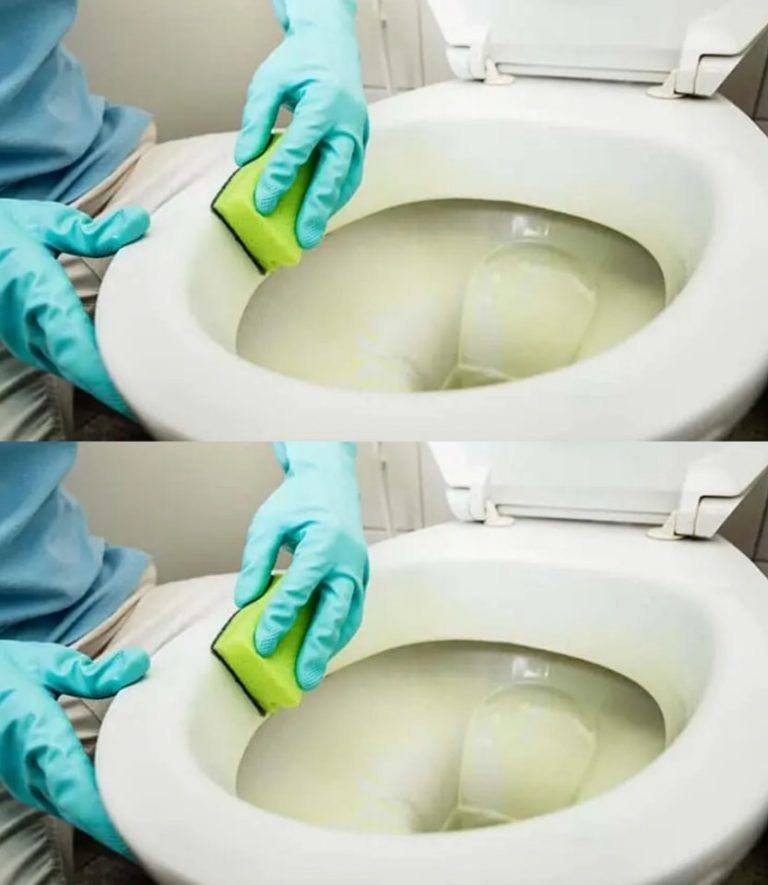ADVERTISEMENT
**Instructions**:
1. **Wet the Pumice Stone**: Wet the pumice stone under running water to soften it. This helps prevent it from scratching the surface of the toilet bowl.
2. **Scrub the Limescale**: Gently rub the pumice stone over the areas of the toilet bowl that have limescale buildup. The pumice stone is mildly abrasive, so it will scrub away the limescale without damaging the porcelain.
3. **Continue Scrubbing**: Work the pumice stone over all the stained areas, applying gentle pressure to avoid scratching the toilet. You may need to rinse the stone and re-wet it as you scrub to keep it soft.
4. **Flush the Toilet**: After you’ve removed the limescale, flush the toilet to rinse away any debris. Your toilet bowl should be free of limescale and restored to its original shine.
#### **Method 4: Commercial Limescale Removers**
If natural remedies don’t fully solve the problem, you may consider using a commercial limescale remover. These products are specifically designed to dissolve hard water deposits and are often more effective for tough stains.
**Materials Needed**:
– Commercial limescale remover (such as Lime-A-Way, CLR, or similar)
– Toilet brush
– Gloves (optional)
**Instructions**:
1. **Read the Label**: Always follow the manufacturer’s instructions when using a commercial cleaner. Some limescale removers are highly acidic, so be sure to use gloves and work in a well-ventilated area.
2. **Apply the Cleaner**: Pour the recommended amount of limescale remover into the toilet bowl. Make sure to coat the sides of the bowl where the limescale buildup is visible.
3. **Let the Solution Sit**: Allow the cleaner to sit in the toilet bowl for 10-15 minutes, or as directed by the product instructions. The solution will begin to break down the limescale deposits.
4. **Scrub with a Toilet Brush**: Use a toilet brush to scrub the bowl, focusing on the areas with heavy buildup. The chemical solution will help loosen the limescale, making it easier to scrub away.
5. **Flush the Toilet**: After scrubbing, flush the toilet to rinse away the cleaner and any debris. Your toilet bowl should now be free of limescale and look shiny and new.
—
### **Preventing Limescale Buildup in the Future**
Once you’ve successfully removed limescale from your toilet bowl, it’s important to take steps to prevent it from returning. Here are some tips for keeping your toilet clean and free from mineral deposits:
1. **Install a Water Softener**: If you live in an area with hard water, consider installing a water softener. This will reduce the amount of calcium and magnesium in your water, preventing limescale buildup in your toilet and other appliances.
2. **Use Vinegar Regularly**: Pouring a small amount of vinegar into the toilet bowl once a week can help prevent mineral buildup. The vinegar’s acidity will keep the limescale from forming, ensuring your toilet stays clean.
3. **Use a Toilet Cleaner with Limescale Remover**: Many toilet bowl cleaners are designed to prevent limescale buildup. Look for a cleaner that specifically mentions its ability to combat hard water stains.
4. **Scrub Your Toilet Weekly**: Regularly scrubbing the toilet bowl with a mild abrasive cleaner like baking soda will help remove any early signs of limescale before they become difficult to tackle.
—
### **Conclusion**
Limescale buildup in the toilet bowl is a common issue, but it’s one that can be easily managed with the right tools and techniques. Whether you choose to use natural remedies like vinegar and baking soda or opt for a commercial cleaner, removing limescale and restoring your toilet to its original shine is achievable. By incorporating regular cleaning routines and taking preventive measures, you can keep your toilet bowl looking like new and maintain a fresh, hygienic bathroom environment for years to come.
